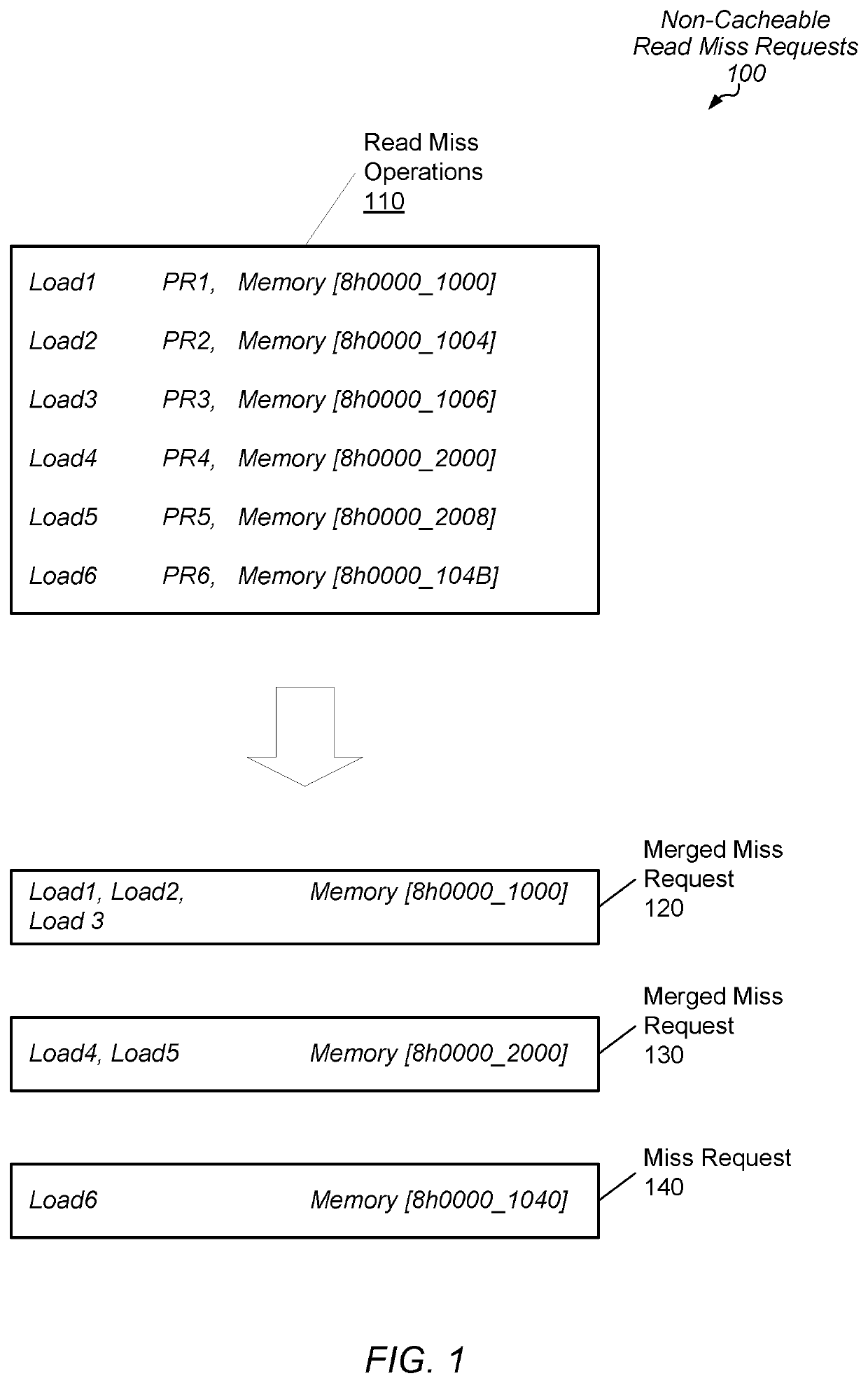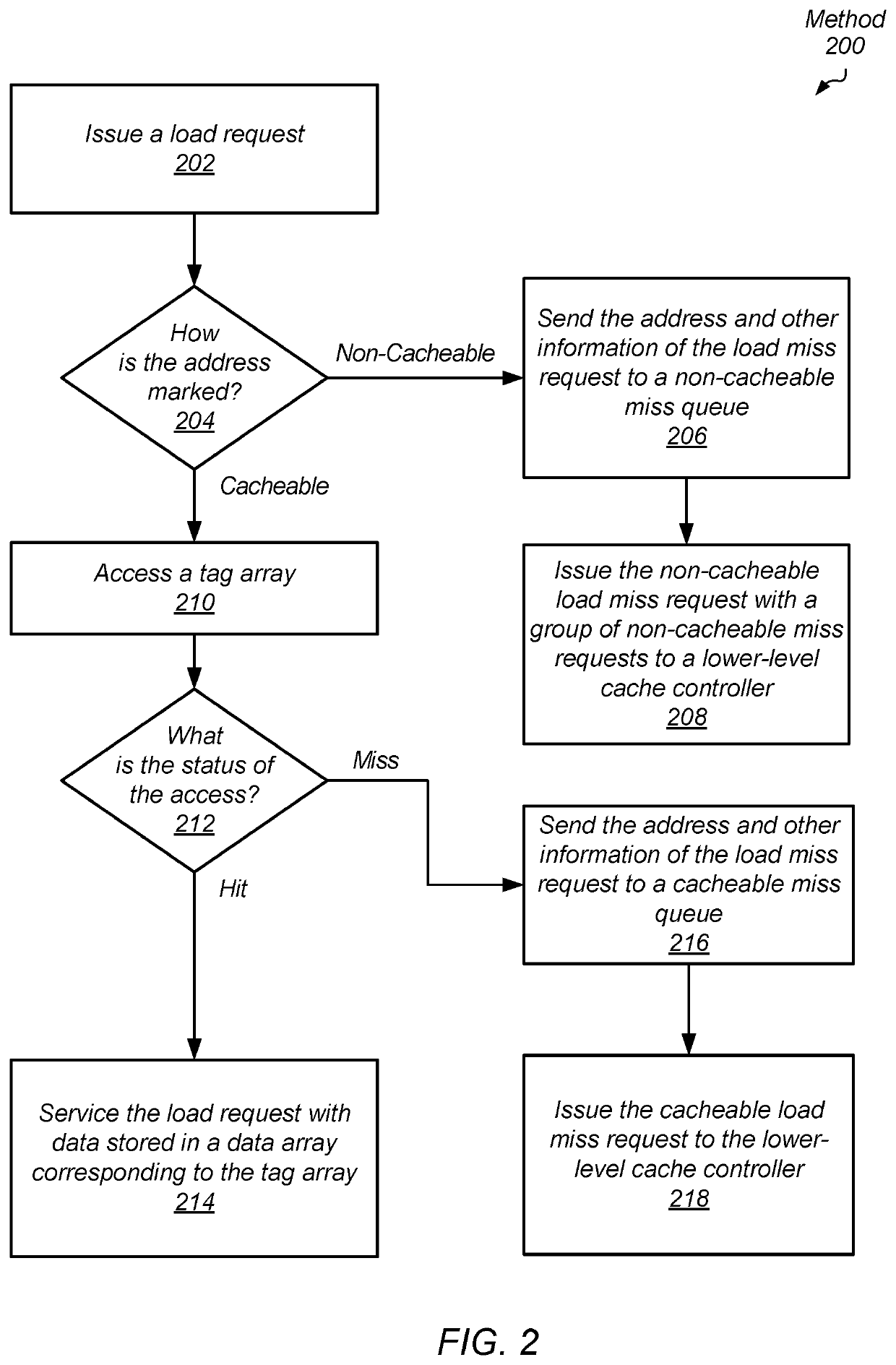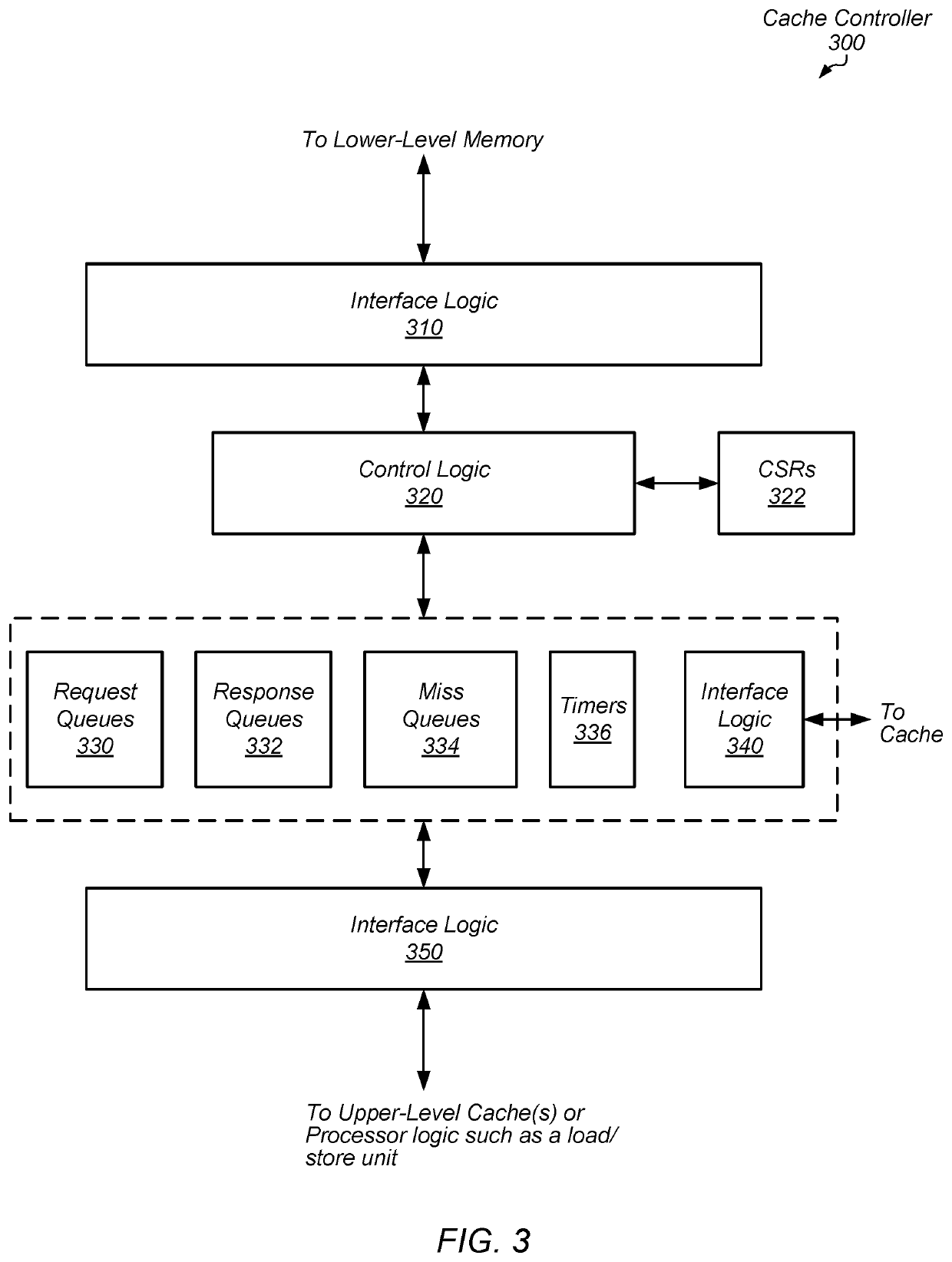Managing serial miss requests for load operations in a non-coherent memory system
a non-coherent memory system and serial miss technology, applied in the field of computing systems, can solve problems such as cache misses, performance impact issues, and system performance may be seriously impacted, and achieve the effect of efficient forwarding cache misses
- Summary
- Abstract
- Description
- Claims
- Application Information
AI Technical Summary
Benefits of technology
Problems solved by technology
Method used
Image
Examples
Embodiment Construction
[0028]In the following description, numerous specific details are set forth to provide a thorough understanding of the embodiments described in this disclosure. However, one having ordinary skill in the art should recognize that the embodiments might be practiced without these specific details. In some instances, well-known circuits, structures, and techniques have not been shown in detail for ease of illustration and to avoid obscuring the description of the embodiments.
[0029]Turning now to FIG. 1, a block diagram illustrating one embodiment of non-cacheable load miss requests 100 is shown. In various embodiments, the read miss operations 110 include six read memory access operations in program order that missed in a cache. As used herein, a “memory access operation” is also referred to as a “memory access request” or a “memory request.” Similarly, as used herein, a “read request” is also referred to as a “load request,” and a “read miss request” is also referred to as a “load miss...
PUM
 Login to View More
Login to View More Abstract
Description
Claims
Application Information
 Login to View More
Login to View More - R&D
- Intellectual Property
- Life Sciences
- Materials
- Tech Scout
- Unparalleled Data Quality
- Higher Quality Content
- 60% Fewer Hallucinations
Browse by: Latest US Patents, China's latest patents, Technical Efficacy Thesaurus, Application Domain, Technology Topic, Popular Technical Reports.
© 2025 PatSnap. All rights reserved.Legal|Privacy policy|Modern Slavery Act Transparency Statement|Sitemap|About US| Contact US: help@patsnap.com



